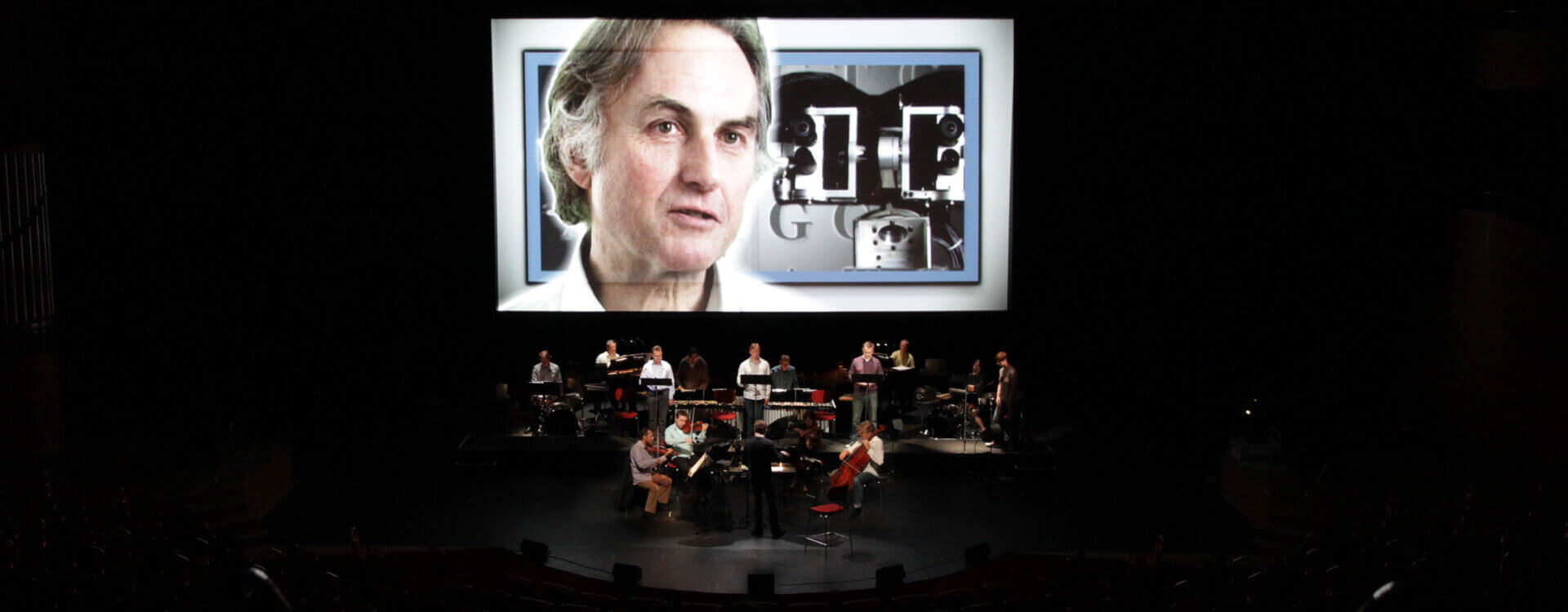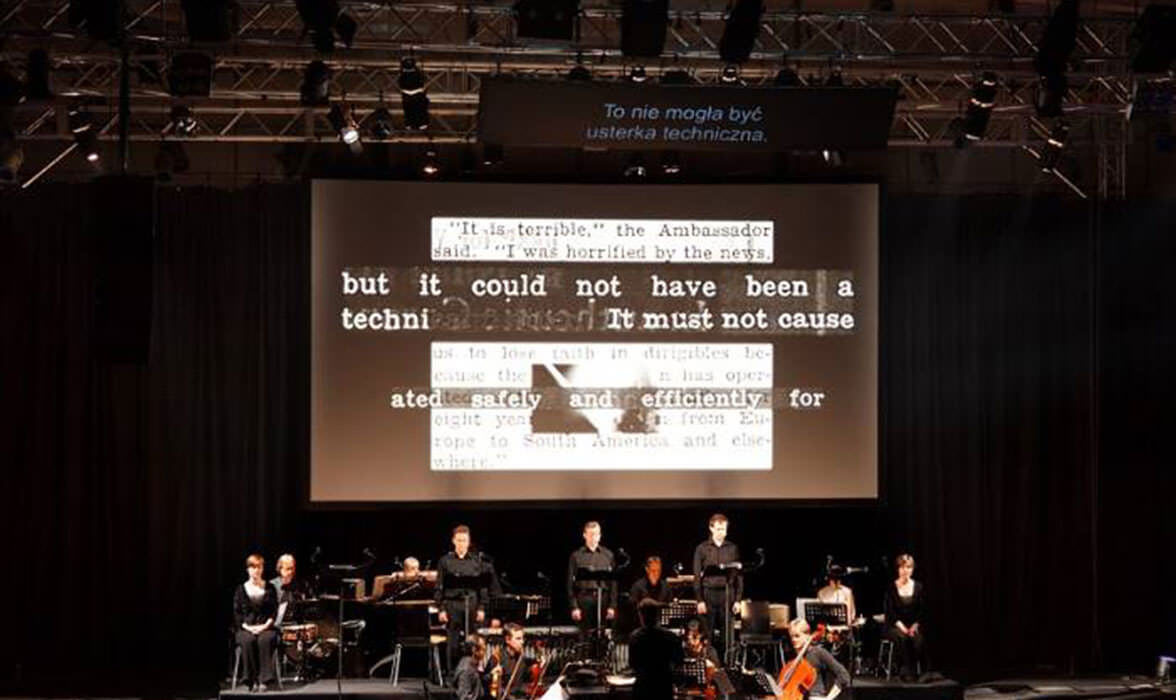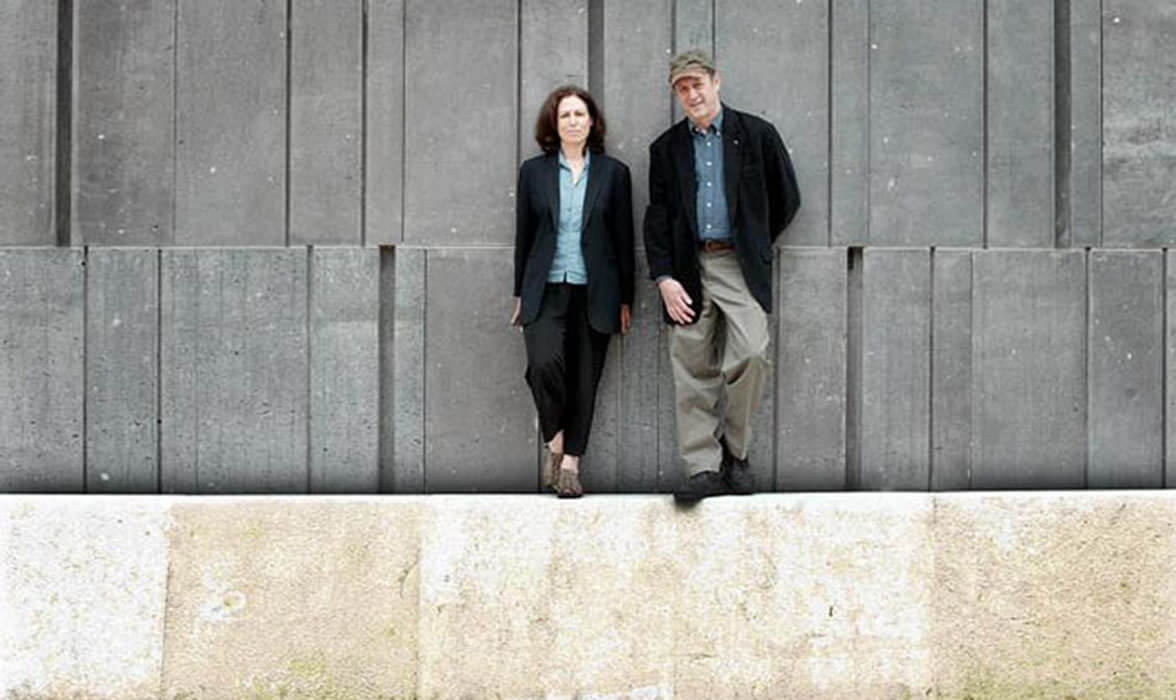Three Tales
Eine dokumentarische Video-Oper von Steve Reich und Beryl Korot›Three Tales‹ (1998-2002) is the second joint production by Steve Reich (music) and Beryl Korot (video), following ›The Cave‹. The documentary video opera depicts the 20th century as an age of technological dominion, with its own distinct promises and catastrophes. Each act is named after and describes one of three central events of this technological age: Hindenburg, Bikini, and Dolly – the crash of the airship Hindenburg after its first transatlantic flight in Lakehurst 1937, the nuclear tests at Bikini Atoll between 1946 and 1954, and finally the first cloning of the sheep Dolly in Scotland in 1997. Thus, they depict the growth and effects of technological development during the last century by referring to the beginnings of aviation as well as to the more recent ethical discussions about the future of mankind.
Video artist Beryl Korot uses video montage, film- and interview sequences to tell those three ›stories‹. While Hindenburg and Bikini are mainly depicted through archive material (historical footage, photographs, video recordings of news presenters etc), Dolly employs filmed interviews. The variety of images on the electronically multi-divided screen reflects technological progress. It is significant that Steve Reich too makes much greater use of musical technological developments than he does in earlier works. Original recordings are integrated into the composition and altered through transpositions and / or rhythmical modulations. Apart from ›slow motion sound‹, in Dolly he also introduces ›freeze frame sound‹. It is not simple criticism of technology, but rather the ambivalence of technological developments that is voiced in this work.
Conducted by Brad Lubman, members of the Ensemble Modern [...] play Reich's monotonous, happy tunes in a way that retains their acoustic puzzle character, part of which lies in the permanently changing relationship between picture and sound, fact and fiction.Frankfurter Allgemeine Zeitung, Gerhard R. Koch
The best of Mr. Reich's music has always involved a tender touching of natural and electronic, human and mechanical, spontaneous and repetitive. It does so in this piece [...]. Here is a quiet truth, that of sympathy across barriers of time and medium.The Times, Paul Griffiths
Certainly no one has made such a symbiotic amalgam between the two media as Reich and Korot, or made it seem so naturally effective. [...] it is hard to imagine how they could top ›Three Tales‹.Guardian, Andrew Clements


